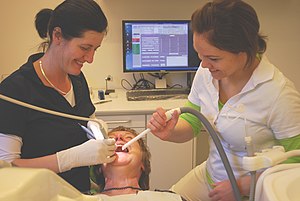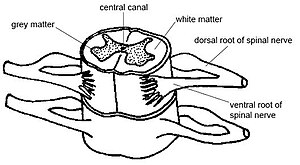About 30 million people in North America have diabetes, and this does not include the millions more who are in the prediabetes stage.
What is diabetes? It’s a hormonal disorder that increases blood sugar levels in your body. Pregnant women sometimes suffer from gestational diabetes; however, the most prevalent forms of diabetes are type 1 and type 2.
Although it is less common, type 1 diabetes occurs when your body’s immune system attacks insulin-production cells in your pancreas. Without insulin, your body cannot properly control blood sugar (glucose). Sufferers of type 1 diabetes require insulin injections to balance their blood sugar levels. There is currently no way to prevent or screen
for type 1.
Type 2 is the most common form of diabetes. With this kind, the body cannot adequately produce enough insulin, or it cannot identify the insulin – which prevents insulin from being absorbed by your body’s cells. Type 2 usually occurs in people over the age over 40, but an alarming trend is the growing rate of this diabetes among children, resulting from a rise in childhood obesity.
Health Consequences of Diabetes
Both types of diabetes can cause serious and even life-threatening health problems. Diabetics are more prone to heart disease, blindness, kidney failure, nerve damage, circulation problems and many other conditions compared to non-diabetics.
A blood test can determine the sugar levels in your body. Symptoms of diabetes include: increased thirst, frequent urination, fatigue, blurred vision and unexplained weight loss.
You can help reduce your risk or manage diabetes by incorporating positive lifestyle changes.
Exercise
Engaging in adequate physical activity is a great idea for almost everyone, but it is especially important for diabetics. Exercise helps manage blood sugar levels, improve the circulatory system, and reduce blood pressure and cholesterol 1.
But diabetics need to take certain precautions when engaging in exercise. If blood glucose levels drop too much, diabetics can suffer from hypoglycemia – a condition that can cause blood sugar levels to decrease so quickly it results in loss of consciousness.
Conversely, if blood sugar levels are high before starting to exercise, the physical activity may increase glucose
to dangerous levels. That is why diabetics need to consult a qualified health professional to learn the right type and right amount of exercise they should be doing.
Diet
As it can have a dramatic impact on blood sugar balance, food plays an important role in diabetes. Diabetics should avoid foods high in cholesterol and saturated fat, such as fried foods, whole milk dairy products and fatty meats. They should also skip cookies, cakes and pies.
Whole grains have been proven to help reduce the risk of diabetes. According to a study published in the
American Journal of Clinical Nutrition, “Data showed a lower risk of diabetes and heart disease in people eating a diet
high in whole grains.”1
Nature’s Helping Hand for Diabetes
While it may be necessary for some diabetics to take medications to control their disease, recent research in natural
substances reveals promising developments for their use in the prevention and management of diabetes.
In September of this year, the University of California (San Diego School of Medicine) identified how omega-3 fatty
acids in fish oil switch on a specific macrophage (a type of white blood cell) resulting in enhanced insulin sensitivity
and reduced inflammation.2
The antioxidant properties of garlic oil may help prevent cardiomyopathy, a type of heart disease that’s the leading
cause of death for diabetics. Research that appeared in the Journal of Agricultural and Food Chemistry shows the oil
may contain 20 or more substances that protect the heart against the development of cardiomyopathy. 3
Another natural ingredient that shows potential for diabetes (type 2) is the herb milk thistle (silymarin). One trial
study revealed that after four months of taking milk thistle, test participants saw their fasting blood glucose levels
decrease by 15 percent, while the placebo group saw their levels rise by 13 percent. Milk thistle seems to have
the ability to block chemical signals associated with raising blood sugar. 4
While the research into natural ingredients shows exciting promise, diabetics should not use supplements without consulting a qualified health specialist, such as a chiropractor.
Chiropractic & Diabetes
As it can seriously impact numerous parts of the body, it should be no surprise that diabetes also affects musculoskeletal health. The disease is associated with joint restriction and osteoarthritis. Diabetic macrovascular
disease affects large blood vessels in the body and can also interfere with the nervous system. Your chiropractor
helps maintain your nervous system health by keeping it clear of subluxations, which in turn leads to not just a
healthier body but an overall better quality of life!
1. Whole grains, bran, and germ in relation to homocysteine and markers of glycemic control, lipids, and inflammation – American Journal of Clinical Nutrition, Vol. 83, No. 2, 275-283, February 2006
2. GPR120 Is an Omega-3 Fatty Acid Receptor Mediating Potent Anti-inflammatory and Insulin-Sensitizing Effects
– Cell, Volume 142, Issue 5, 687-698, 3 September 2010.
3. Cardiac Contractile Dysfunction and Apoptosis in Streptozotocin-Induced Diabetic Rats Are Ameliorated by Garlic Oil Supplementation – J. Agric. Food Chem., 2010, 58 (19), pp 10347–10355.
4. The efficacy of Silybum marianum (L.) Gaertn. (silymarin) in the treatment of type II diabetes: a randomized,
double-blind, placebocontrolled, clinical trial – Phytother Res. 2006 Dec; 20(12):1036-9.












